
Dealing with credit card disputes can feel like a headache, but knowing your rights is the first step toward protecting your money. When you spot an issue on your statement, from a fraudulent transaction to a simple billing error, you have a powerful tool on your side: the chargeback. This process lets you formally contest a charge and potentially get your money back. Understanding the valid reasons to dispute a credit card charge is key to successfully making your case with the credit card issuer.
This guide is designed to be your straightforward resource for handling these situations. We won't waste time with complicated jargon or vague advice. Instead, we'll get right into the most common and legitimate scenarios where a dispute is the right move. For each reason, you’ll find clear explanations, practical steps to take, and real-world examples to help you understand what to do.
Think of this as your playbook for getting your money back when something goes wrong. We’ll cover everything from unauthorized charges and incorrect billing amounts to issues with undelivered products and services that didn't meet expectations. By the end of this list, you'll have the confidence and knowledge to challenge unfair charges and make sure your credit card statement is accurate.
1. Fraudulent or Unauthorized Charges
This is one of the most straightforward and urgent reasons to dispute a credit card charge. A fraudulent or unauthorized charge happens when a transaction shows up on your statement that you, or anyone authorized to use your account, did not make. It’s a clear sign that your credit card information has been compromised, whether through a physical theft, a data breach, or an online scam.
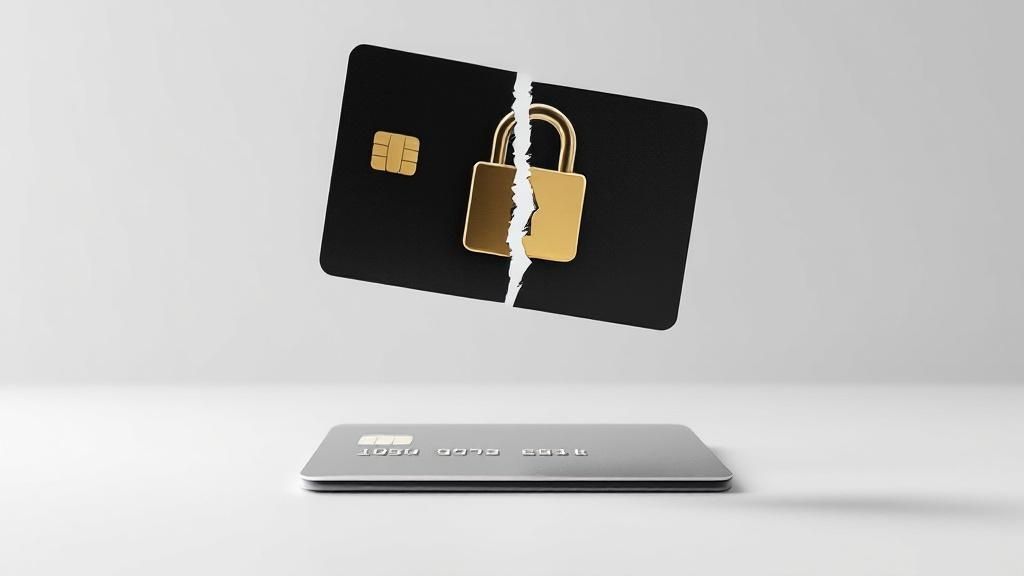
The Fair Credit Billing Act (FCBA) gives you strong consumer protections, limiting your liability for unauthorized charges to a maximum of $50. However, most major credit card issuers go a step further by offering zero-liability policies, meaning you won’t be responsible for any fraudulent amount, as long as you report it quickly.
Common Scenarios for Fraudulent Charges
- Stolen Card: Your physical card is stolen from your wallet or purse, and the thief makes a series of purchases before you can report it missing.
- Skimming: A device illegally installed on an ATM, gas pump, or point-of-sale terminal captures your card information, which is later used to create a counterfeit card.
- Card-Not-Present (CNP) Fraud: A fraudster gets your card number, expiration date, and CVV code through a phishing email or a hacked website and uses it to make online purchases.
- Account Takeover: A criminal gains access to your online credit card account, changes the contact information, and starts making unauthorized purchases.
How to Handle Unauthorized Charges
Acting quickly is key to minimizing damage and sorting things out. Follow these steps:
- Review Statements Diligently: Don't wait for your monthly statement. Check your account activity online every few days to spot suspicious transactions early.
- Set Up Alerts: Enable real-time transaction alerts via text or email. This gives you immediate notification of every charge, helping you identify fraud the moment it happens.
- Report Immediately: As soon as you spot a charge you don't recognize, contact your credit card issuer. The FCBA gives you 60 days from the statement date to report an error, but reporting it sooner is always better.
- Keep Records: Note the date and time you contacted your bank, the name of the representative you spoke with, and any reference numbers they provide.
For businesses, preventing these situations is a top priority. Implementing robust web application security is crucial to protect customer data and stop fraudulent transactions at the source. Understanding the difference between a fraudulent charge and a friendly fraud dispute can also save a lot of time and money. For more detailed insights, you can learn more about managing fraud and disputes.
2. Billing Errors or Incorrect Amounts
This common reason to dispute a credit card charge involves situations where you were charged the wrong amount for a legitimate purchase. Unlike fraud, you meant to make the transaction, but a clerical or system error resulted in an incorrect charge. These mistakes can range from simple typos to more complex system glitches, but they all result in an overcharge that you shouldn't have to pay.
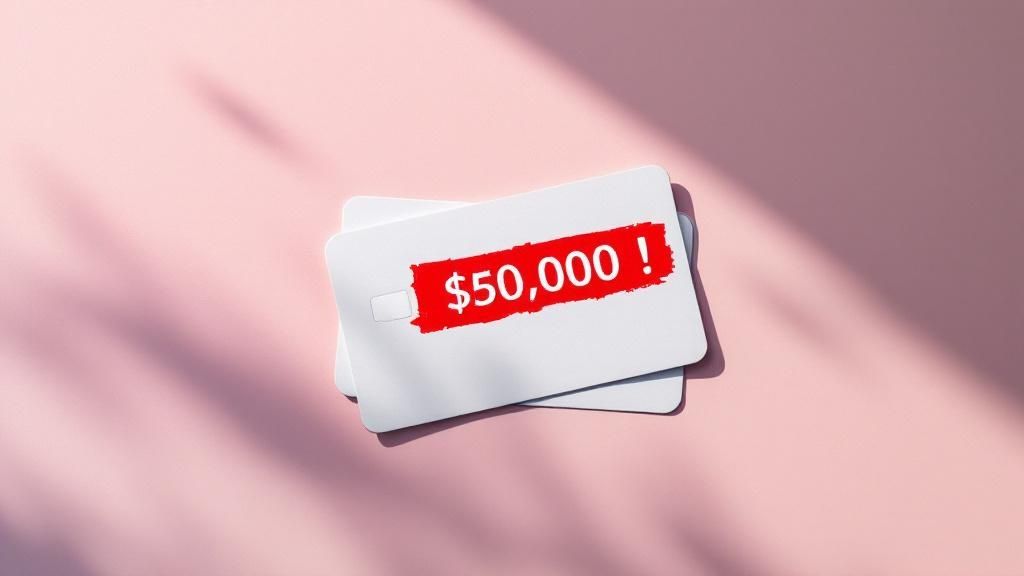
The Fair Credit Billing Act (FCBA) protects you from these types of billing errors, giving you the right to challenge charges that are for the wrong amount. Luckily, these are often the easiest disputes to resolve, especially when you have clear documentation, as merchants are usually quick to correct genuine mistakes to keep their customers happy.
Common Scenarios for Billing Errors
- Duplicate Charges: The merchant's payment system accidentally processes your transaction twice, resulting in two identical charges for a single purchase.
- Incorrect Amount Entered: A simple human error, such as a restaurant server entering
$875.00instead of the correct$87.50on the bill. - Pricing Mismatches: An online store charges you the full price for an item, even though you purchased it during a 40% off sale, and your confirmation email proves the discounted price.
- Pre-Authorization Holds: A gas station places a $100 hold on your card, but the hold never adjusts down to your actual $45 fuel purchase.
- Wrong Quantity: A hotel bills you for a five-night stay, but your reservation and checkout folio clearly show you only stayed for three nights.
How to Handle Billing Errors
A proactive and organized approach will make fixing these errors much smoother.
- Keep Your Receipts: Always hold onto physical receipts and save email confirmations until you can verify the charge has posted correctly to your account.
- Take Screenshots: When making online purchases, especially during sales, take a screenshot of the final checkout page showing the total price.
- Contact the Merchant First: Often, the fastest way to fix a billing error is by contacting the business directly. They can often issue a refund or correction immediately, avoiding a formal dispute process.
- Gather Your Proof: If you need to file a dispute, have your evidence ready. This includes receipts, email confirmations, screenshots, and a clear explanation of why the charge is incorrect.
For merchants, efficiently handling these situations is key to keeping customers. A streamlined process for addressing billing inquiries can prevent them from escalating into formal chargebacks. Understanding the details of chargeback and dispute management can significantly reduce revenue loss and administrative headaches.
3. Non-Delivery of Goods or Services
This is a frustratingly common reason to dispute a credit card charge, especially in the age of e-commerce. This dispute applies when you have paid for a product or service but the merchant fails to deliver it. The item may never arrive at all, or it may show up so significantly late that you no longer have a use for it. The merchant’s failure to fulfill their side of the purchase agreement gives you a strong reason for a chargeback.

Under consumer protection laws, you are not obligated to pay for something you never received. Whether it's a physical product, a digital item, or a scheduled service, the charge is only valid if the merchant holds up their end of the bargain. If they fail to do so and are unresponsive to your requests for a resolution, a dispute is your next logical step.
Common Scenarios for Non-Delivery
- Lost in Transit: You order an item online, receive a tracking number, but the package never arrives at your doorstep and the tracking stalls.
- Pre-Order Failure: A pre-ordered video game or gadget isn't shipped on its official release date, and the merchant won't process a cancellation.
- No-Show Contractor: You pay a deposit to a contractor for a home repair project, but they never show up to begin the work.
- Service Not Rendered: You purchase tickets for a concert or event online but never receive the tickets, either digitally or by mail, before the event date.
How to Handle Non-Delivery Issues
Documentation and patience are your best tools when dealing with a non-delivery situation. Follow these steps to build a strong case:
- Contact the Merchant First: Before starting a dispute, always try to resolve the issue directly with the seller. This is often the fastest way to get a refund or a replacement item shipped.
- Document Everything: Keep a detailed record of all your communication attempts. Save emails, chat transcripts, and notes from phone calls, including dates, times, and who you spoke with. Also, save your order confirmation and any shipping promises made at the time of purchase.
- Check Tracking Information: Thoroughly review any tracking information provided. Sometimes a package is delayed, delivered to a neighbor, or held at a local post office. Confirm the delivery status before proceeding.
- File the Dispute Promptly: If the merchant is unresponsive or unwilling to help after a reasonable amount of time has passed, contact your credit card issuer to file a dispute. Provide them with all the documentation you've collected to support your claim.
For merchants, understanding how to manage these specific claims is vital. Platforms have distinct processes, and knowing the fine points can be the difference between a successful resolution and a loss. To better understand the specific rules, you can learn more about handling item not received disputes on PayPal.
4. Product or Service Not As Described
This common reason to dispute a credit card charge applies when the item or service you receive is significantly different from what was advertised. It’s a quality dispute, meaning the problem isn't that you didn't receive anything, but that what you got falls drastically short of the seller’s promises. This covers everything from counterfeit goods to services that fail to deliver on their core commitment.
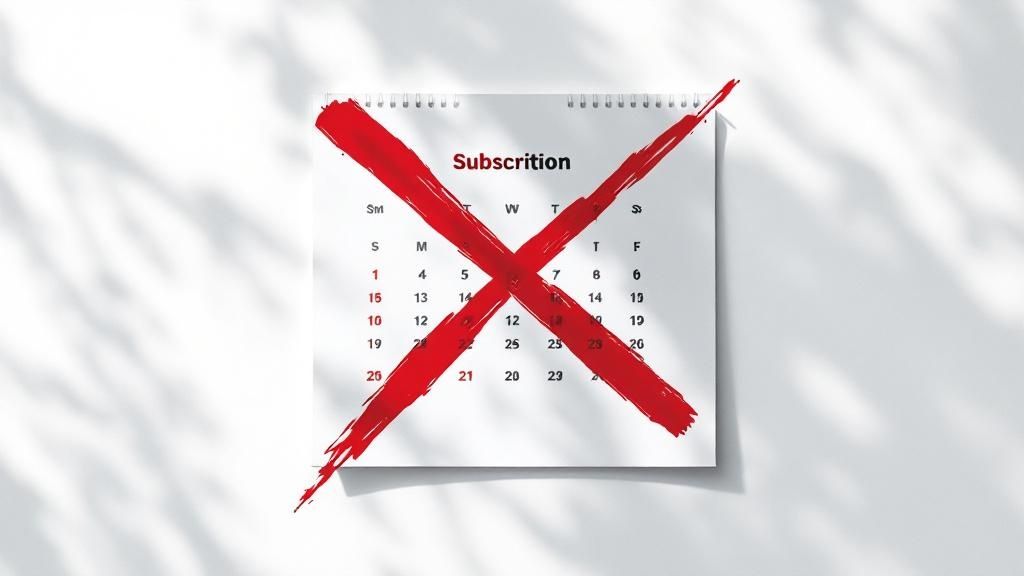
Unlike fraudulent charges, credit card issuers require you to first attempt to resolve the issue directly with the merchant. If the seller is unresponsive or unwilling to provide a satisfactory solution, such as a refund or replacement, you can then proceed with a chargeback. Documenting your communication is crucial for a successful dispute.
Common Scenarios for This Dispute
- Incorrect Item or Specifications: You order a solid wood table online, but the item that arrives is made of cheap particle board.
- Counterfeit Products: The designer handbag you purchased turns out to be an obvious fake when compared to an authentic product.
- Service Not Rendered as Promised: A hotel room advertised with an "ocean view" actually overlooks the parking lot, or a car repair service fails to fix the specific problem you paid them to address.
- Significantly Damaged Goods: An electronic device arrives with a cracked screen or non-functional components that were not disclosed in the product description.
How to Handle a 'Not as Described' Issue
A well-documented case is much more likely to be resolved in your favor. Follow these steps to build a strong claim:
- Gather Evidence Immediately: As soon as you receive the item, take clear photos and videos. Document the packaging, the product itself, and any specific flaws or discrepancies. For services, document the outcome versus what was promised.
- Save the Original Listing: Keep screenshots of the original product description, images, and specifications from the website. This is your primary evidence of what was advertised.
- Contact the Merchant First: Reach out to the seller via email to create a written record of your communication. Clearly explain the issue, provide your evidence, and state your desired resolution (e.g., refund, replacement).
- Keep Meticulous Records: Note every date, time, and person you speak with. Save all email correspondence and tracking numbers. If the merchant fails to resolve the issue, this documentation will be vital when you file the dispute with your credit card company.
5. Cancelled Subscription or Recurring Charge
This is a common and frustrating reason to dispute a credit card charge. It happens when you follow a merchant’s rules to cancel a subscription or recurring service, but they continue to bill your card anyway. This could be a monthly gym membership, a streaming service, or a software subscription that you no longer need or want.
The Fair Credit Billing Act (FCBA) protects you in these scenarios. Once you have properly withdrawn your authorization for recurring payments, any subsequent charges are considered unauthorized. The responsibility falls on the merchant to prove that you agreed to the continued billing, not on you to prove you cancelled.
Common Scenarios for Recurring Charge Issues
- Post-Cancellation Billing: You submit the required cancellation form for your gym membership, but another monthly fee appears on your next statement.
- Ignored Cancellation Requests: You send multiple emails to cancel a monthly subscription box service, but the company continues to charge you and ship products.
- "Free Trial" Traps: You sign up for a free trial and cancel well before the deadline, but the company charges you for a full subscription, sometimes claiming you didn't cancel correctly.
- Difficult Cancellation Processes: A merchant makes it nearly impossible to cancel, requiring you to call during very limited hours or navigate a confusing maze of web pages, which can be a violation of consumer protection laws.
How to Handle Cancelled Subscription Charges
Documentation is your best friend when dealing with these disputes. Follow these steps to build a strong case:
- Cancel in Writing: Whenever possible, cancel via email or a website portal. This creates an automatic "paper trail" with a timestamp that proves when you submitted your request.
- Save Everything: Screenshot the cancellation confirmation page, save any confirmation emails, and note down any cancellation reference numbers provided by the merchant.
- Document Phone Calls: If you must cancel by phone, write down the date, time, the name of the representative you spoke with, and what they confirmed. Ask for a confirmation email or number during the call.
- Review Terms Upfront: Before signing up, understand the cancellation policy. Note how much notice you need to give before the next billing date and set a calendar reminder.
- Contact the Merchant First: Before filing a dispute, contact the merchant with your cancellation proof and request a refund. If they refuse or are unresponsive, you can then proceed with the dispute.
Understanding why customers cancel can also provide valuable insights. For more detail, you can explore common reasons for product returns and service cancellations.
6. Credit Card Processing Errors
Sometimes, the problem isn't with the merchant or the purchase itself but with a technical glitch or administrative mistake during the transaction's journey. These credit card processing errors can lead to incorrect charges, and they are a perfectly valid reason to dispute a credit card charge. This category covers any error that happens behind the scenes, separate from the actual agreement you had with the seller.
A processing error might be a simple mistake like a duplicate charge, or something more complex like an incorrect currency conversion. Because these issues often originate from the payment processor or the bank's systems, they can be confusing. However, your rights as a consumer protect you from being financially responsible for these technical mishaps.
Common Scenarios for Processing Errors
- Duplicate Charges: A merchant's payment terminal or an online gateway glitches and charges your card twice for a single purchase.
- Incorrect Amount: The final charge that posts to your account is different from the amount on your receipt or the authorized total. For example, a pre-authorization hold of $50 for a hotel minibar incorrectly settles for $150.
- Wrong Currency: A purchase made in a foreign currency is converted at an incorrect or undisclosed rate, resulting in a significant overcharge.
- Post-Cancellation Charges: A charge is processed after you've already reported the card lost or stolen and received a replacement. The old card number should have been deactivated.
- Miscategorized Fees: You are charged a foreign transaction fee for what was clearly a domestic purchase, or a cash advance fee is applied to a regular retail transaction.
How to Handle Processing Errors
Resolving these errors requires careful documentation and clear communication with your credit card issuer.
- Compare Receipts to Statements: Meticulously compare your paper or email receipts with the transactions posted on your credit card statement. This is the fastest way to spot discrepancies in amounts.
- Understand Fee Structures: Take a moment to read your cardholder agreement to understand how foreign transaction, cash advance, and other fees are supposed to be applied. This knowledge helps you identify when a fee has been charged in error.
- Document Everything: Keep a record of the exact date and time you reported a card lost or stolen. This documentation is critical if charges appear after that point.
- Report the Error Clearly: When you contact your bank, be specific. Instead of saying "the charge is wrong," explain that "this was a single $50 transaction that was duplicated" or "this $100 pre-authorization settled for an incorrect amount of $175." Provide any reference numbers or receipts you have.
7. Merchant Refused Refund for Returned Item
This is a frustrating yet common reason to dispute a credit card charge. It occurs when you follow a merchant’s return policy, send back a product, but never receive the promised refund. This protection exists to ensure merchants honor their own stated terms of sale and don't unfairly hold onto your money after you’ve done your part.
This scenario isn't just about a slow refund; it covers situations where the merchant denies receiving your return despite proof, stalls the process indefinitely, or attempts to enforce a different policy than the one advertised at the time of your purchase. Your right to a chargeback in this case is a powerful tool to enforce fair business practices.
Common Scenarios for Refund Refusals
- "Lost" Returns: You return a product with a tracking number that confirms delivery, but the merchant claims they never received it and refuses to issue a credit.
- Unreasonable Delays: The merchant acknowledges receiving your return but delays processing the refund for weeks or even months beyond their stated timeframe.
- Policy Disputes: A merchant offers a full refund on their website but later tries to issue store credit instead, or they deny the return by claiming the item wasn't in acceptable condition.
- Undisclosed Policies: The merchant's return policy was either not available or unclear at the time of purchase, and they later refuse a return that you believed was reasonable.
How to Handle a Refused Refund
Meticulous documentation is your best defense. Follow these steps to build a strong case for your dispute:
- Document the Policy: Before you buy, take a screenshot of the merchant’s return policy page. This captures the terms you agreed to and prevents disputes if the merchant later changes their rules.
- Use Trackable Shipping: Always return items using a shipping method that provides a tracking number and delivery confirmation. For high-value items, consider adding insurance and requiring a signature upon delivery.
- Keep All Records: Save everything related to the return. This includes the return authorization number, shipping receipts, tracking information, photos of the item before you packed it, and all email or chat correspondence with the merchant.
- Allow a Reasonable Timeframe: Give the merchant adequate time to process the return, typically 15-30 days after they receive the item. If the refund still hasn’t appeared, contact them one last time before initiating a dispute.
When a merchant fails to process a credit after a legitimate return, it becomes a clear-cut case for a chargeback. For a deeper look into the specifics of this chargeback reason, you can explore the details of a credit not processed chargeback.
7 Key Reasons to Dispute Credit Card Charges
Putting Dispute Strategies to Work
Navigating the world of credit card disputes can feel overwhelming, but understanding the legitimate reasons to dispute a credit card charge is the first step toward taking control. From clear-cut cases of fraud to frustrating situations where a product simply isn't what you expected, the power to initiate a chargeback is a vital consumer protection tool. You are not powerless when a transaction goes wrong.
The key takeaway is that you have rights, and these rights are supported by federal law. Whether you're dealing with a duplicate charge, an incorrect billing amount, a service you never received, or a subscription that just won’t cancel, a well-documented dispute can set things right. The most successful disputes are not based on anger or frustration, but on clear, factual evidence that supports your claim.
Turning Knowledge into Action
Mastering this process is about more than just getting your money back on a single transaction; it's about building financial confidence. When you know how to effectively challenge a charge, you can shop online and subscribe to services with greater peace of mind. You become a more empowered consumer, capable of protecting your hard-earned money from errors, bad business practices, and fraud.
To put these strategies into practice, here are your next steps:
- Organize Your Evidence: Before you do anything else, gather all your documentation. This includes receipts, order confirmations, email correspondence with the merchant, photos of the incorrect or damaged item, and tracking information. The more evidence you have, the stronger your case will be.
- Communicate Clearly: When you file your dispute, whether online, over the phone, or in writing, be concise and specific. State the exact problem, the amount in question, and the resolution you're seeking. If you need to formally contact the merchant or your card issuer, mastering the skill of writing an effective complaint letter can make a significant difference in how your claim is perceived and handled.
- Follow Up Consistently: Don't just file and forget. Keep a record of when you filed the dispute and with whom you spoke. Set reminders to check the status of your claim with your credit card issuer. Persistence is often the key to a successful outcome.
By arming yourself with knowledge and a proactive approach, you can transform a negative purchasing experience into a resolved issue. Each of these reasons to dispute a credit card charge provides a valid pathway to reclaim your funds and hold merchants accountable. Use these insights not just as a guide, but as a playbook for safeguarding your finances.
Tired of manually tracking disputes and managing evidence? Let ChargePay automate the entire process for you. Our platform helps Shopify merchants recover lost revenue by handling chargebacks from start to finish. Learn more about ChargePay today!
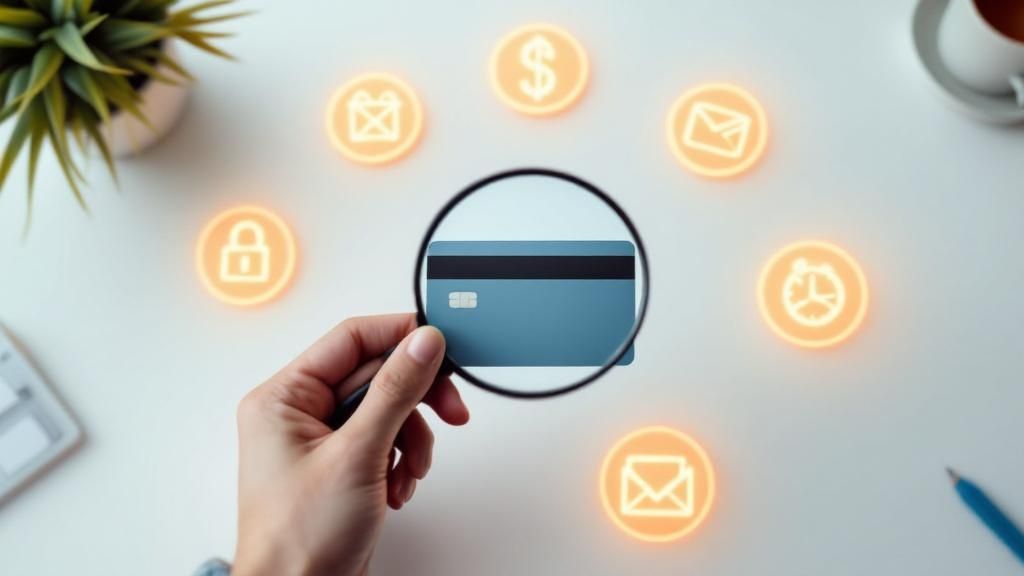


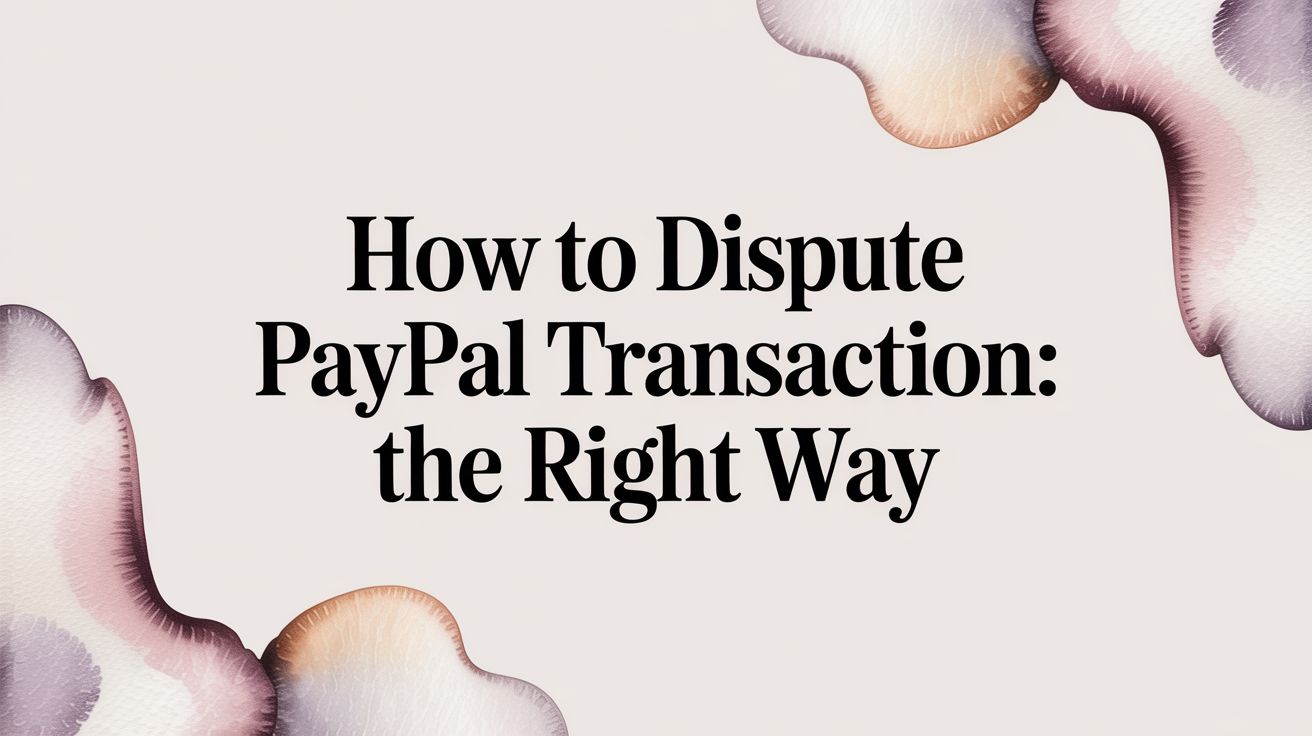

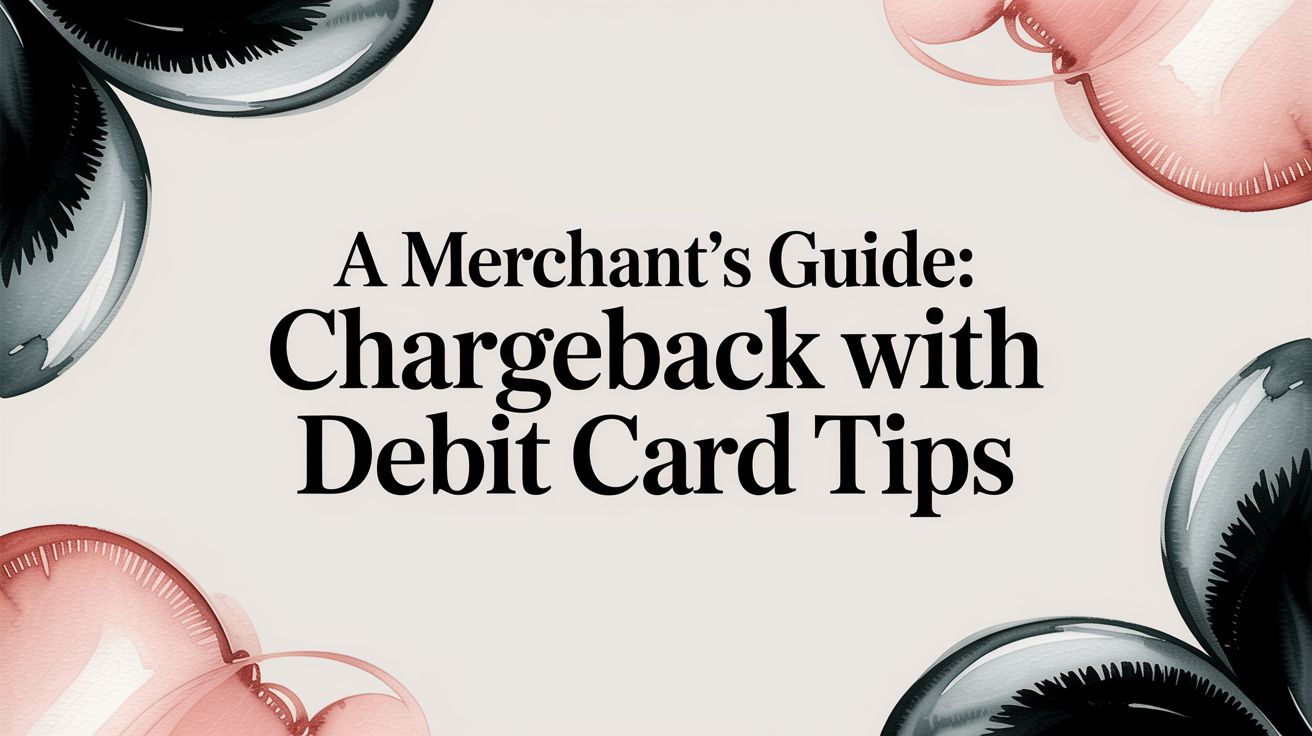

.svg)







.svg)
.svg)
.svg)